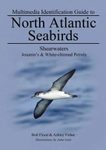![The Kittiwake The Kittiwake]()
Click to have a closer look
About this book
Contents
Biography
Related titles
About this book
Returning to its breeding sites in the spring after a winter spent far out at sea, the Kittiwake is a familiar sight around the coasts of Britain and Europe. A pale, medium-sized gull with a 'gentle' expression and bright yellow bill, the Kittiwake has been the subject of behavioural research since the late 1950s - one of the longest running studies in the world. In this new Poyser monograph, John Coulson summarises these decades of research, revealing amazing insights into the life of these gulls, with wider implications for the behavioural ecology of all colonial birds. There are sections on life at sea, nest-site selection, breeding biology, feeding ecology, colony dynamics, moult, survivorship and conservation. This book is essential for academics working on colonial species, and is also of great interest to birders who want to learn more about these elegant cliff-dwelling birds.
Contents
Acknowledgements 7
Preface 11
1. Introduction 15
2. Kittiwake feeding methods and food 27
3. Winter oceanic distribution and reoccupation of the colony 48
4. Pre-breeding, nesting and nest building 70
5. Eggs, clutch size and incubation 77
6. Chicks, growth, fledging, productivity and desertion of the colony 97
7. Weights of kittiwakes during breeding 133
8. Factors affecting individuals within a colony 138
9. Long-term changes in individual colonies 173
10. Kittiwake survival rates, longevity and causes of mortality 195
11. Colonies, recruitment and population trends 207
12. Primary moult in the kittiwake 242
13. Kittiwakes and humans 249
Appendix 1. The history and methods used at the North Shields colony 261
Appendix 2. Age of pairs of kittiwakes at North Shields 270
Appendix 3. Annual variation in productivity of kittiwakes 273
Appendix 4. Data relating to the effect of position in the colony and age 275
Appendix 5. List of scientific names of species mentioned in the text 279
References 281
Index 299
Customer Reviews
Biography
Over more than 40 years of research, John Coulson has made outstanding contributions to the behavioral ecology of colonially breeding seabirds and our understanding of coloniality in birds. This work includes distinguished long-term studies of the Kittiwake, of which this book represents a detailed overview. A former Reader in Zoology at the University of Durham, Coulson was awarded the Godman-Savin Medal by the British Ornithologists' Union in 1992.
Monograph
Out of Print
By: John C Coulson
304 pages, 8 colour plates, b/w graphs & illustrations, tables
Customer Reviews:
The Kittiwake
by Keith Betton in the United Kingdom (24/0/2012)
If you were asked to name the most numerous gull species in the world I doubt very much that you would suggest the Black-legged Kittiwake. With about 9 million adults (and as many immatures in addition) it easily outnumbers the Herring Gull and is the commonest gull. By contrast the Red-legged Kittiwake is much less common, with a population of just 300,000 birds. Not only that, but both species are the most oceanic of seabirds breeding in the northern hemisphere. These gulls are tough and much more interesting than you might first imagine.
Despite its title, this latest Poyser Monograph is actually about the two species, the latter being restricted to west Alaska on the Pribilof and Aleutian Islands where both species can be seen nesting in the same colonies. To date no mixed pairs have never been recorded. They have plenty of similarities, but this book shows how different they are too. While both have sub-arctic and arctic breeding distributions where the seawater temperature is cold, the Red-legged Kittiwake is a specialised feeder, adapted for nocturnal or crepuscular feeding.
The author demonstrates how both species have adapted well to nesting on almost sheer cliffs. For example, when copulation takes place the female does not stand like other birds do, and instead she sits. Unlike other gulls the chicks do not run when threatened by a predator, they sit facing towards the cliff. However interestingly the adults lack the ability to recognise their own chicks and will feed any chick on the nest site.
The book has chapters covering all key aspects of the birds' lives. There are sections on feeding methods and food, distribution in winter, interactions with humans, and moult, but the majority of the book explains every possible aspect of the breeding process – spread across eight chapters. I was particularly interested in an appendix which described the author's work at a North Shields colony since 1949. Indeed his contribution to our understanding of these tough seabirds is immense – indicated by the 47 papers in which he was the lead author.










































